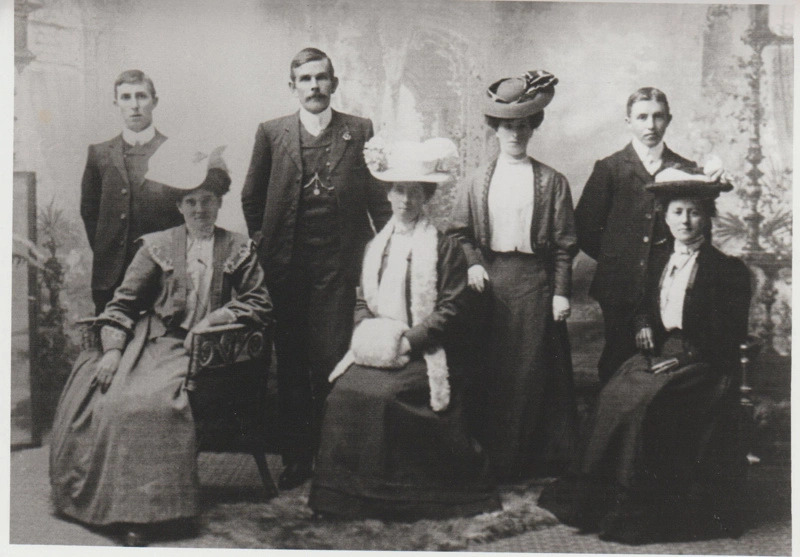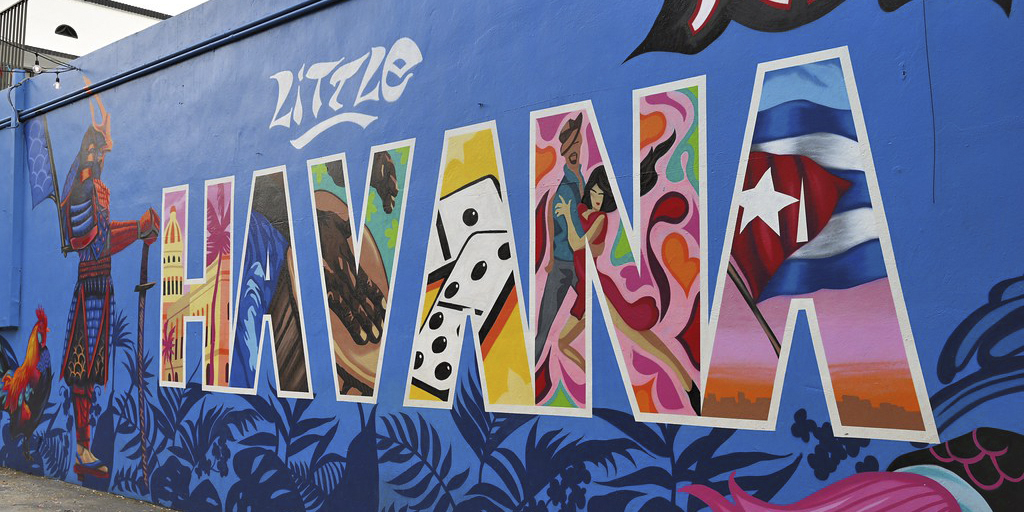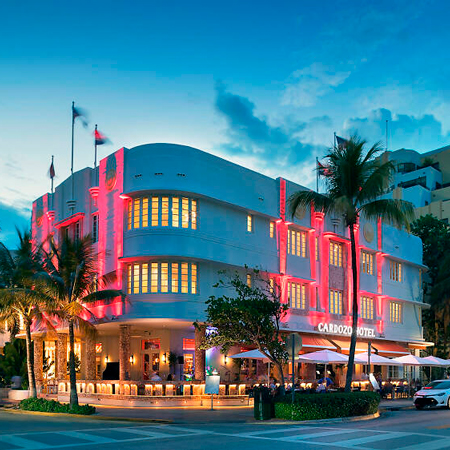Florida
Welcome to Miami, a city where vibrant culture, rich history, and modern sophistication converge to create one of the most dynamic urban landscapes in the world. Known as the Magic City, Miami earned its nickname during the early 20th century due to its rapid growth in both population and prominence. Today, it continues to attract people from around the globe with its sun-drenched beaches, thriving economy, and unparalleled lifestyle.
From its humble beginnings as a settlement on lands owned by visionary pioneers like Julia Tuttle and William Brickell, Miami has grown into a global hub for commerce, culture, and innovation. Its skyline tells a story of transformation, blending historic Art Deco gems with awe-inspiring modern skyscrapers. The city's architectural diversity mirrors its vibrant population—an eclectic mix of cultures that have shaped Miami into an international melting pot.
Miami’s real estate market offers endless opportunities for investors. Whether it’s the robust demand in the rental market, driven by low homeownership rates and high population growth, or the residential sales market’s steady appreciation, Miami is a city where property investments promise exceptional returns.
For those who value innovation, the city’s adaptability shines through its ability to embrace new architectural styles, economic shifts, and the evolving demands of its residents. Miami is more than just a city—it’s a lifestyle, and for investors, it’s a place where opportunities meet potential.

1. In the fiscal year of 2024, PortMiami recorded over 8.2 million cruise passengers, a record. This is around a quarter of all cruise passengers worldwide.
2. Most beaches in Miami are artificially made, so they occasionally need to be replenished with sand.
3. Despite it's warm climate, Miami is home to one of the largest skiing clubs in the US, Miami Ski Club.
4. There is only one day of recorded snow in Miami - January 19th 1977.
5. Due to it being barely above sea level, most buildings in Miami do not have a basement, since they are very expensive to maintain.
Known as The Magic City for its astonishing growth in population and relevance in the early 20th century, Miami has since evolved into a vibrant hub of culture, business, and leisure. Its unique position as a gateway to the Americas, paired with its stunning beaches, tropical climate, and bustling urban landscape, makes Miami one of the most desirable places to live, visit, and invest in.
Ancient beginnings
The story of Miami begins with the Mayaimi people, a Native American group believed to have inhabited the region for over 2,000 years. These early inhabitants lived along the shores of the region’s rivers and wetlands, thriving off the rich natural resources.
Colonial exchanges
With the arrival of European explorers, the Mayaimi faced conquest by the Spanish. Over the centuries, the area exchanged hands between Spanish and British rule multiple times before the United States formally acquired Florida in 1821, marking the beginning of a new chapter for the region.
A city built by a woman
Miami’s foundation is a remarkable story of vision and determination, led by Julia Tuttle, a Cleveland native and widow. After inheriting land from her father, she used the proceeds to purchase a significant tract of land in what is now Miami. Tuttle dreamed of creating a flourishing city but recognised the critical role of transportation in achieving this vision.
For four years, she petitioned industrialist Henry Flagler to extend his Florida East Coast Railway to Miami. The turning point came in 1895, during the Great Freeze that devastated citrus crops in northern Florida. Legend has it that Tuttle sent Flagler a bouquet of citrus flowers and oranges to demonstrate that Miami’s crops had been spared. Convinced of the area’s potential, Flagler agreed to extend his railway network, and in 1896, the city of Miami was officially incorporated.
The Brickell legacy
Tuttle was not alone in shaping Miami’s destiny. William and Mary Brickell, her neighbours and fellow Cleveland natives, played a significant role in the city’s development. They contributed half of their land to support the railway’s expansion, ensuring Miami’s growth as a transportation and economic hub. After Tuttle’s death in 1898, Mary Brickell became a central figure in Miami’s rapid development, leaving a lasting legacy in areas like Brickell Avenue, a modern financial district.
World War II and post-war growth
During World War II, Miami became a key training centre for the U.S. Army Air Corps. The city’s iconic Art Deco buildings, particularly in Miami Beach, were repurposed to support the war effort, housing technical training facilities. After the war, many soldiers returned to settle in Miami, drawn by its warm climate and growing economy, spurring further population growth.
The Cuban Revolution
The 1950s brought dramatic demographic changes as the Cuban Revolution prompted a mass exodus. An estimated 500,000 Cuban refugees fled to Miami, significantly influencing the city’s culture, economy, and identity. Today, Miami boasts a vibrant Cuban-American community, particularly in areas like Little Havana.

Haitian immigration and the 1990s
The 1990s saw another wave of immigration, this time from Haiti, as refugees sought better opportunities in Miami. The influx of diverse populations further enriched the city’s multicultural fabric, cementing its reputation as a melting pot of cultures from across the Americas and the Caribbean.
Modern boom and skyline transformation
The early 2000s marked a new era for Miami, characterised by a surge in high-rise construction that dramatically reshaped its skyline. Despite the challenges of the Great Recession in 2008, the city continued to thrive, cementing its status as a global city with a dynamic real estate market and thriving urban core.
Demography
Miami’s population is as vibrant and diverse as its cultural and architectural landscapes. As of 2022, the city is home to 443,665 residents, while the broader Miami-Dade metro area boasts a population of 6.13 million, making it one of the most populous urban centres in the southeastern United States.
The median age in Miami is 39.7, slightly above the national average of 38.2. This reflects a balanced population with a mix of younger professionals, families, and an older demographic that has historically been drawn to Miami’s warm climate and relaxed lifestyle.
Miami’s diversity is one of its defining characteristics. Approximately 64.5% of the population identifies as Hispanic, highlighting its deep connections to Latin America and the Caribbean. In addition, Miami has one of the highest proportions of foreign-born residents in the U.S., with 57.6% of its population born outside the country—vastly exceeding the national average of 13.6%. Only 71.6% of Miami’s population holds U.S. citizenship, compared to the national figure of 93.5%, making Miami a true international city.
Economy
As a global hub for trade, tourism, and finance, Miami plays a critical role in both the state and national economies.
The Miami-Fort Lauderdale-West Palm Beach metro area had a GDP of $483.75 billion in 2022, reflecting an impressive 11.56% growth from the previous year. This figure accounts for a substantial 34.8% of Florida’s total GDP, underscoring Miami’s significance as an economic engine.
Despite its economic influence, Miami’s median household income is $54,858, which is lower than the national median. This highlights the city’s economic disparities but also points to opportunities for upward mobility within its growing industries.
The construction sector leads as the city’s largest employer, with 11.8% of the population working in this field. This is no surprise, as Miami has undergone a significant transformation in recent years, with a surge in new developments reshaping its skyline and infrastructure. Other major sectors include tourism, international trade, and finance, all of which benefit from Miami’s strategic position as a gateway to the Americas.
Miami’s workforce is bolstered by its educated population, with 24.83% holding qualifications equivalent to or higher than a Bachelor’s degree. This skilled labour pool supports the city’s evolving economy, particularly in sectors such as technology, healthcare, and logistics.
Miami’s demographic and economic trends make it a dynamic and ever-evolving city, with opportunities for growth and investment across various sectors.
Miami’s architecture is as diverse and dynamic as its culture, showcasing an eclectic mix of styles that reflect its rich history and forward-looking growth. From historic preservation efforts to cutting-edge skyscrapers, the city’s architectural landscape is a visual journey through time.

Art Deco: A Treasure Trove
At the heart of Miami’s architectural identity is its iconic Art Deco style. The city boasts the world’s largest collection of Art Deco buildings, with over 800 structures showcasing this distinctive style. These buildings, many of which are located in Miami Beach, are characterised by their pastel colours, geometric patterns, and sleek lines. Organisations like the Miami Design Preservation League work tirelessly to protect and preserve these treasures, ensuring that Miami remains synonymous with Art Deco.
The Skyline of the Future
Miami’s skyline has undergone a dramatic transformation, particularly during the high-rise construction boom of the 2000s. This period saw the completion of the city’s three tallest buildings:
1. Panorama Tower: Standing at an impressive 265 metres with 85 floors, this Brickell landmark, completed in 2017, holds the title of Miami’s tallest building.
2. Aston Martin Residences: Finished in 2023, this architectural masterpiece stands at 249 metres and is the tallest residential building south of New York City, with 66 floors of luxury living.
3. Four Seasons Hotel Miami: Completed in 2003, this sleek structure rises to 240 metres and includes 70 floors, blending hotel and residential spaces seamlessly.
Bricksave is proud to have been part of Miami’s architectural story. One of its early U.S. investments is located in the prestigious 1100 Millecento building in Brickell. Ranking as the 82nd tallest building in Miami, this modern high-rise reaches an astonishing 143 metres with 42 floors, reflecting the area’s luxury and sophistication.
Modernism and Miami Modern (MiMo)
Miami Modernist architecture, or MiMo, emerged in the post-war period as a bold and innovative design movement. Characterised by its playful and extravagant elements, MiMo architecture was driven by the creativity of a new generation of architects and the demands of a growing city. These structures are a defining feature of Miami’s urban landscape, adding flair and individuality to its streets.
Historic and Mediterranean Influences
Miami also pays homage to its historical and cultural roots through Historic Spanish-style single-family homes and Mediterranean Revival buildings. These styles, with their intricate detailing and timeless elegance, draw inspiration from the Renaissance and early modern architecture of Europe, as well as the Medieval Moorish style. The latter reflects influences from West Islamic architecture (9th–15th centuries), particularly before the conclusion of the Reconquista in Spain.
Miami’s architectural diversity is a testament to its rich history and vibrant future.
Rental Market
Miami’s rental market is both dynamic and competitive, offering opportunities for investors in a city with high demand for housing. The median rent for single-family homes currently stands at $4,000, according to Zillow. This figure is significantly higher than other major U.S. cities, exceeding Detroit by 208%, Cleveland by 186%, and Chicago by 60%. Despite these high prices, demand remains strong, with the market rated as “warm” on a scale from cold to hot.
Vacancy rates in Miami are particularly low, sitting at 6.2%, compared to the national average of 7.27%, as reported by Miami Realtors. This suggests a robust demand for rental properties, bolstered by Miami’s relatively low homeownership rate of 30.1% (far below the national average of 65.6%). The year-on-year change in homeownership is minimal at just +0.1%, indicating that most residents continue to rely on rental housing. This steady demand, coupled with a stable rental market following a slight decline in late 2023, creates a favourable environment for landlords and real estate investors alike.
Residential Sales Market
Miami’s sales market has experienced remarkable growth in recent years, with property values reaching new heights. The Zillow Home Value Index indicates a median home price of $595,455 as of October 2024, marking an impressive 114% increase since July 2016. Despite these rising prices, homes are being sold close to their list prices, with a sale-to-list price ratio of 0.971. Properties stay on the market for an average of 43 days—longer than the national average—but this is largely due to the higher financial commitments required to purchase real estate in Miami.
The cost per square foot has risen to $499, a 2% increase from 2023, reflecting the continued demand for Miami properties. While the market is currently not considered highly competitive, changes may be on the horizon. Successive Federal Reserve rate cuts in late 2024 are expected to make mortgages more accessible, potentially driving increased buyer interest.
Although the number of homes sold is down 4.8% compared to 2023, this is anticipated to change as more buyers enter the market due to improving borrowing conditions. For investors, this represents a strategic opportunity. Miami’s relatively low entry point, paired with the potential for high returns in a growing market, positions Bricksave’s cash-based property purchases as a strong investment strategy, leveraging current conditions to maximise returns in the future.
O investimento está associado a riscos, incluindo a perda de capital e a falta de liquidez. Leia nossa Advertência de Riscos antes de investir.